How to use a steam cleaner
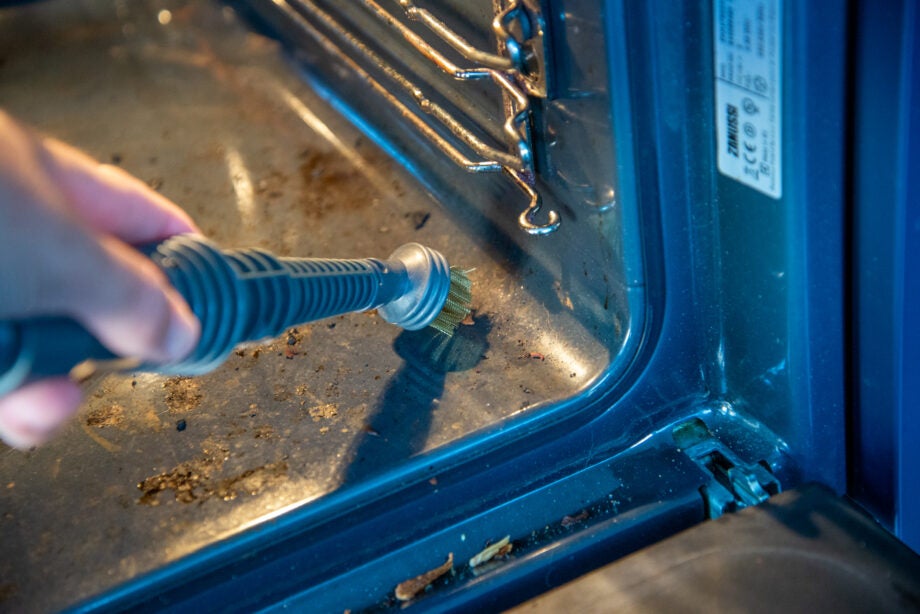
Introduction
Steam cleaners are handy appliances for hygienic and chemical-free cleaning throughout your home. But how do you get the most out of them, and which attachments are best for specific surfaces?
In this guide, we’ll show you how to best use your steam cleaner and all of its attachments, to achieve streak-free cleaning on all types of surface. Don’t forget to check out our guide to the best steam cleaners to help you find the perfect model.
Steam cleaner types and attachments
Steam cleaners come in various shapes and sizes that can broadly be divided into cylinder, mop and handheld cleaners. The latter are usually the lightest and best for spot cleaning, but have no floor-cleaning capacity. Some mop steam cleaners simply function as mops that emit steam – but these days, many also come with a detachable main unit that can be fitted with attachments for spot cleaning. These appliances usually have names such as “x-in-1 steam cleaner”.
Meanwhile, cylinder steam cleaners are larger and come with a hose – like cylinder vacuum cleaners. Albeit trickier to manoeuvre, most cylinder cleaners can also be used for spot cleaning by attaching various accessories to the hose or to accompanying extension sticks.
All three categories of steam cleaner often come with similar attachments, including small round and metal brushes; large round, rectangular or triangular brush tools; curved nozzles; scraper tools; squeegees and mop heads (cylinder and mop cleaners only). The mop heads normally come with at least one microfibre pad (although best cleaners have several) and sometimes a carpet glider. An elasticated microfibre cover is often included, suitable for fitting over the squeegee or one of the large brush tools. But where are these attachments best put to use?
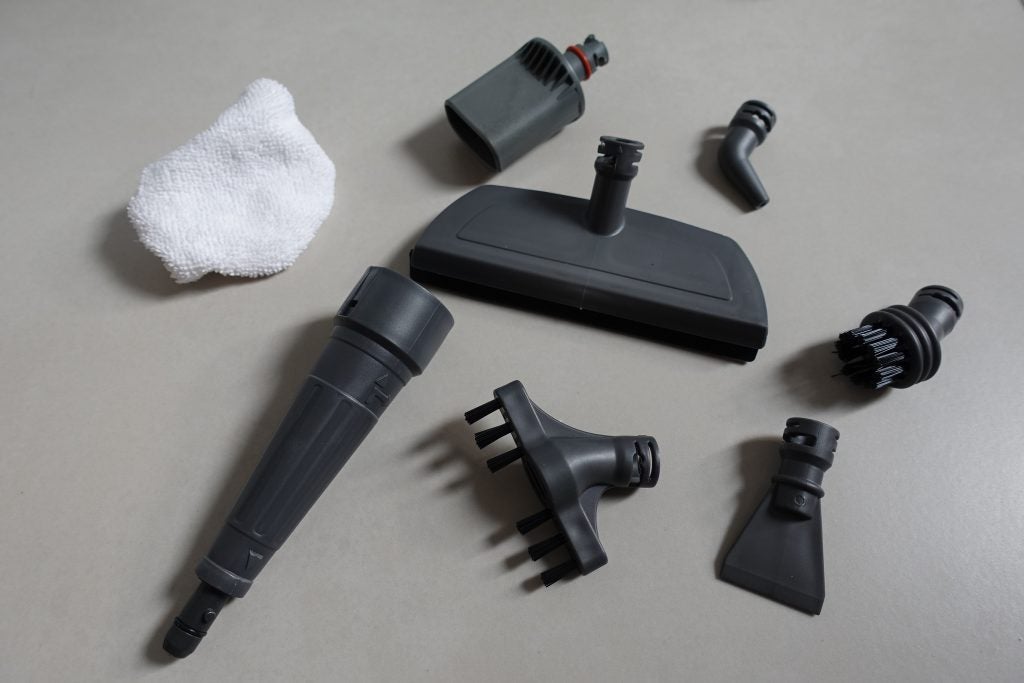
Floors and carpets
Steam cleaners are suitable for all types of sealed wood and stone flooring – the types of surfaces that can resist water – while unsealed boards are likely to warp and need more gentle cleaning. Painted and/or varnished surfaces are unlikely to be suitable for steam cleaning. If in doubt, it’s always best to start with a small area, and never keep the mop head steaming in one place for too long to avoid any potential damage.
In order to use a mop head safely and efficiently, it needs to be fitted with a microfibre pad, normally attached using a hook and loop system. These are usually particular to a steam cleaner brand, and their sizes can vary even between different models, so it’s best to purchase any extra ones from your appliance manufacturer. Before steaming, you should vacuum the floor, to clear up loose dust and debris.
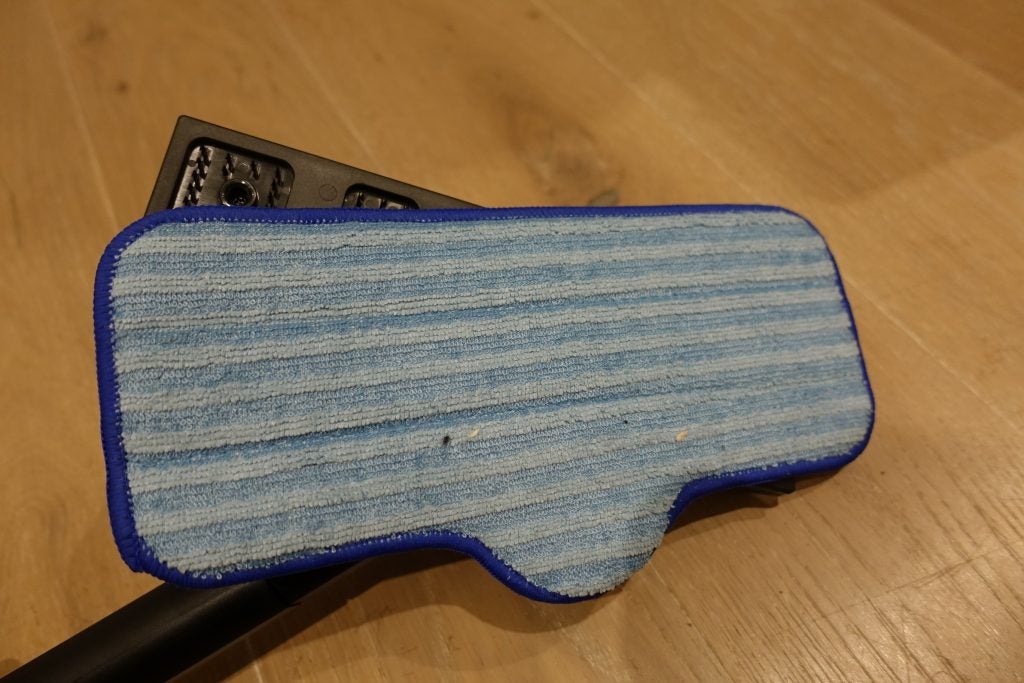
For carpets, some cleaners come with a carpet glider – a plastic frame that fits over the mop head and attached microfibre pad, allowing the mop head to move easily across the carpet. After steaming, your carpet may feel slightly moist and need some time to dry.
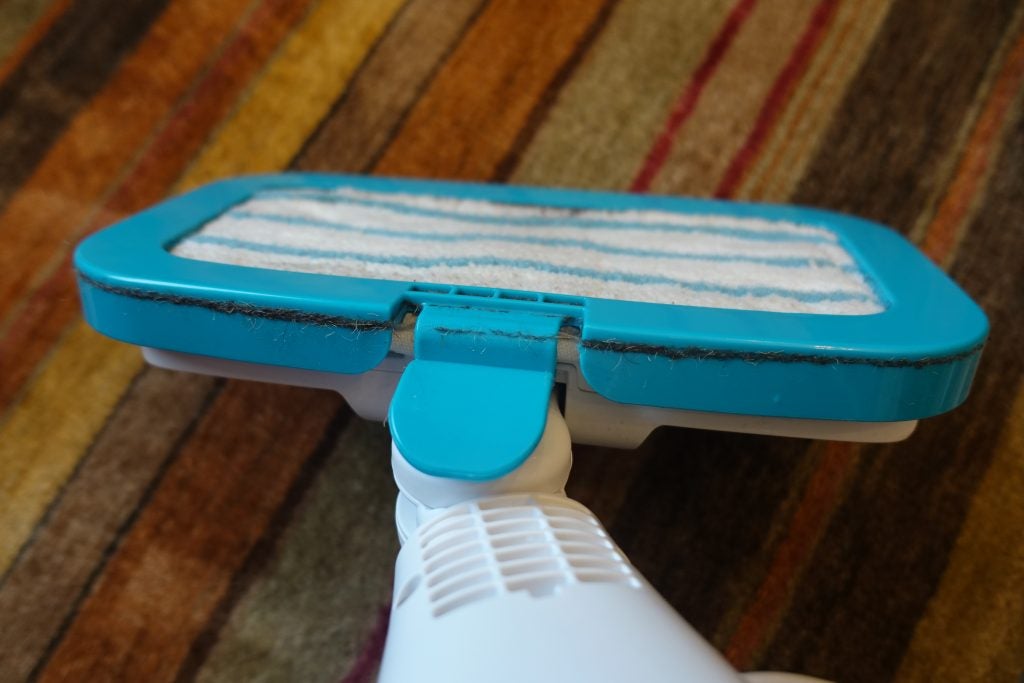
A steam cleaner with a glider attached is best used for a carpet refresh, to sanitise the surface, improve colour, and remove dust or light stains. For thorough cleaning, a specialist carpet cleaner might be more appropriate.
Grouting, tiles and other ceramic surfaces
For tiled floors, a steam cleaner floorhead works best. But if you’re specifically looking to remove dirt from grouting, then a smaller attachment will be required.
Some steam cleaners come with a crevice brush, which is thin and can be easily moved back and forth in the groove between the tiles. However, these brushes can sometimes bend out of shape after more rigorous scrubbing.
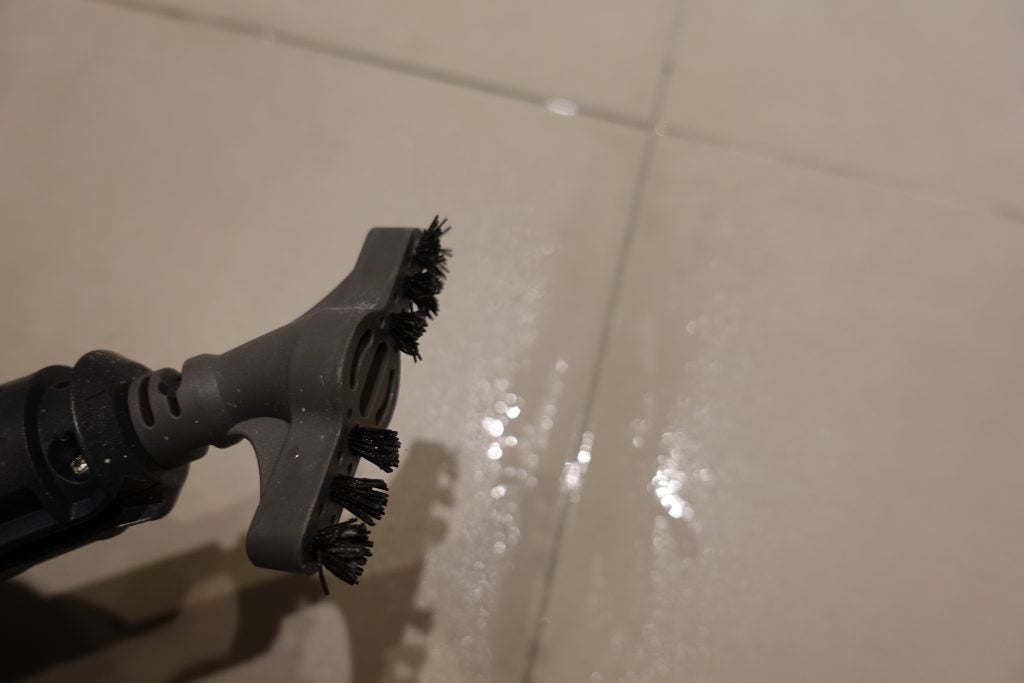
A small round brush will work just as well, and is more resistant to bending due to a greater number of bristles. A detail or a curved nozzle that simply blows out steam without making surface contact could also be useful for grouting; however, it will only remove superficial dust.
For tiled walls, a large brush tool or a squeegee with a microfibre cover is best, helping to remove dirt and polish the surface.
A brush tool of any size is handy for other ceramic surfaces, such as sinks and bathtubs, as well as their tap fittings. For toilet bowls, a simple stream of hot steam from a detail nozzle without any surface contact would be the most hygienic solution.
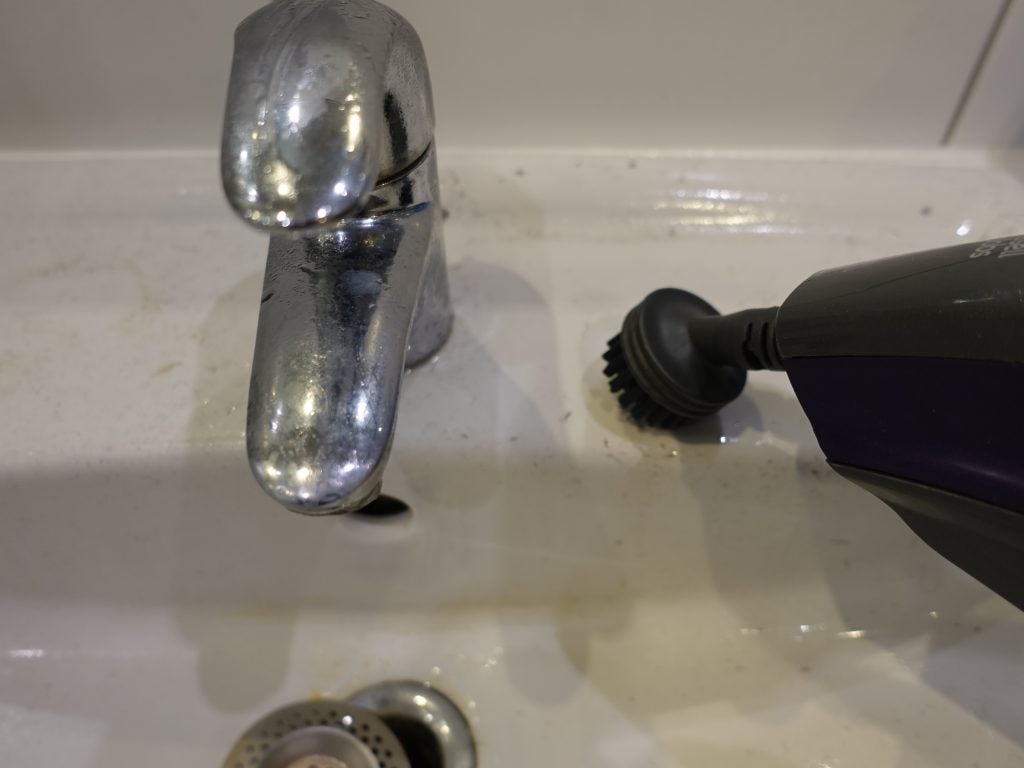
Mirrors, glass and shower screens
Most steam cleaners come with a squeegee tool, which makes cleaning hard transparent surfaces much easier. But the size of the squeegee can vary hugely, with some smaller than 100mm and others closer to the 200mm mark. If steaming windows is important to you, I’d recommend keeping this in mind when choosing your cleaner.
Not all steam cleaners come with a squeegee microfibre cover – sometimes, the cover is fitted to a different tool. But having a microfibre-covered squeegee can be useful for keeping surfaces from becoming too wet, particularly if you have a steam cleaner that emits a lot of water. Otherwise, it’s best to keep a cloth nearby for drying, to avoid any streaks.
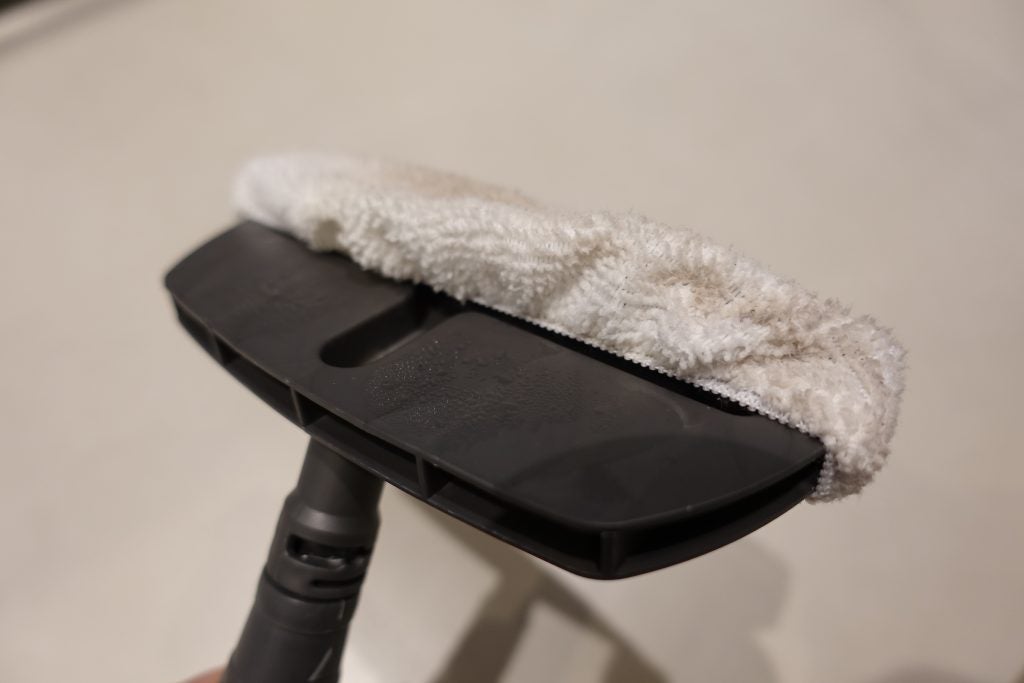
On bathroom mirrors or shower screens, stubborn limescale can be tricky to eliminate with the power of steam alone. It may be useful to spray the surface with some vinegar or a glass-cleaning solution before the steaming – or, afterwards, for a quick polish with a cloth, once the majority of soap scum and dirt is removed.
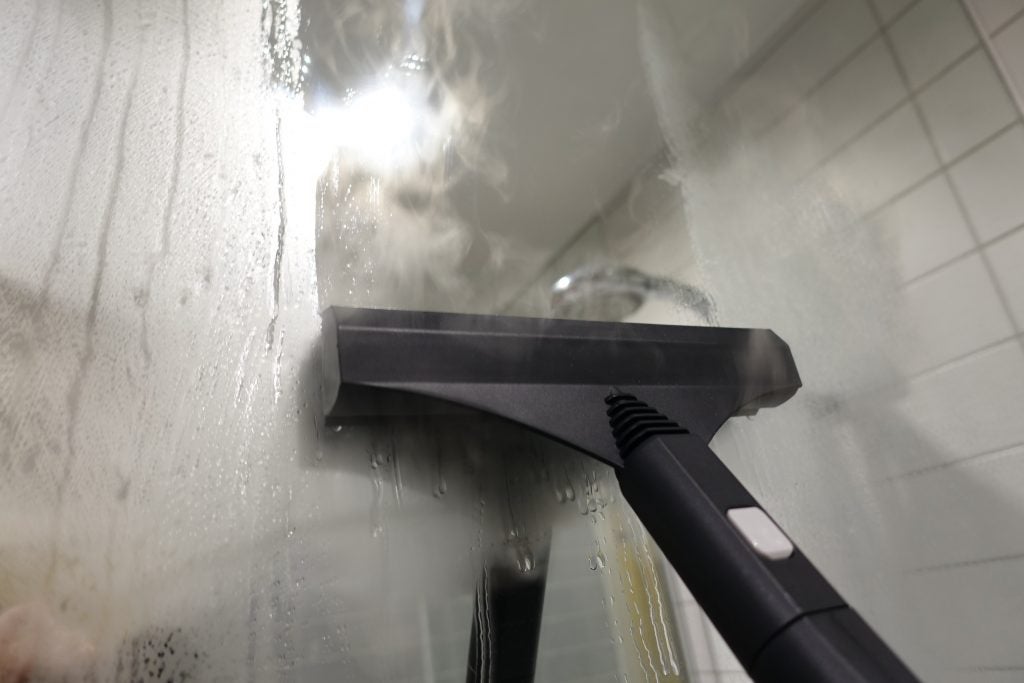
Stovetops and ovens
Steam cleaners can be surprisingly efficient for getting rid of oils without the need for specialist stovetop or oven cleaning chemicals. However, it’s always useful to keep a microfibre cloth or two nearby. The most powerful and efficient cleaners are sometimes (although not always) the wettest, and therefore likely to leave your cooking area soaked in a layer of grimy water. You should also wipe away any spillages before steaming a surface.
For ceramic hobs, it’s best to use a scraper tool – usually made of plastic, with the steam directed down its flat sides. Using brushes here may scratch the surface, while detail nozzles that simply blow out steam without making any contact are unlikely to dislodge grease.
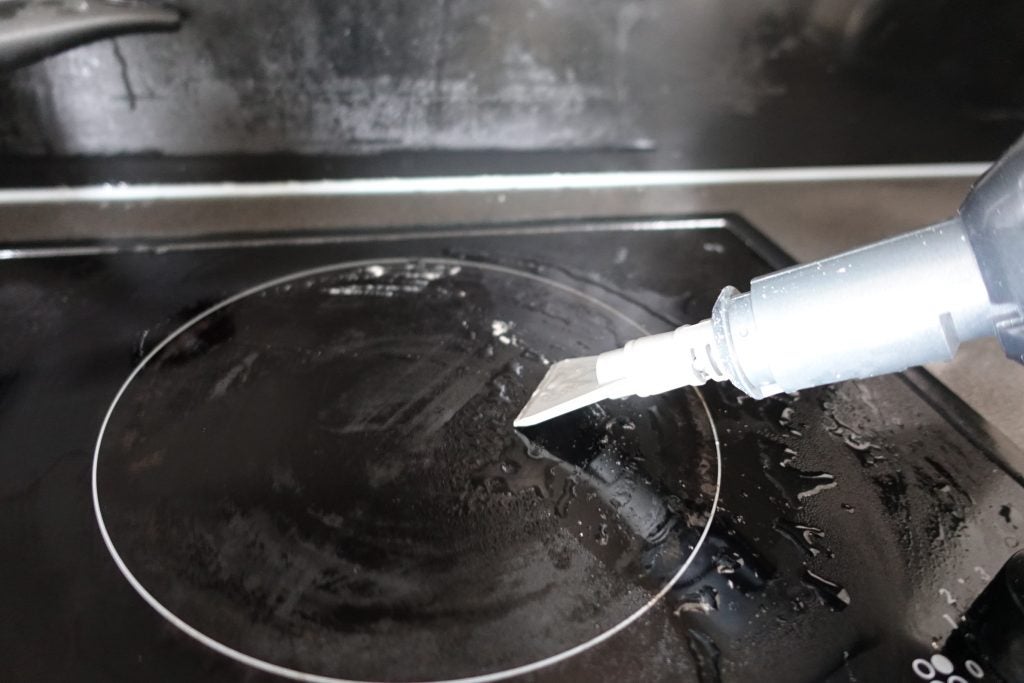
Although the scraper tool is often recommended for cleaning the inside of your oven door, in my tests I’ve had more success with the small round brush. For the scraper tool to work, the grease still needs to be relatively recent rather than baked in – as oven grease often is. For gas stoves, the small round brush is also useful for scraping away food remnants.
Even better at battling grease are metal brushes – similar to small round brushes, but with metal bristles instead of hard plastic ones. However, these are likely to scratch surfaces. In my tests, I found them useful for scraping grilles and other strong metal structures, such as barbecue or gas hob grates.
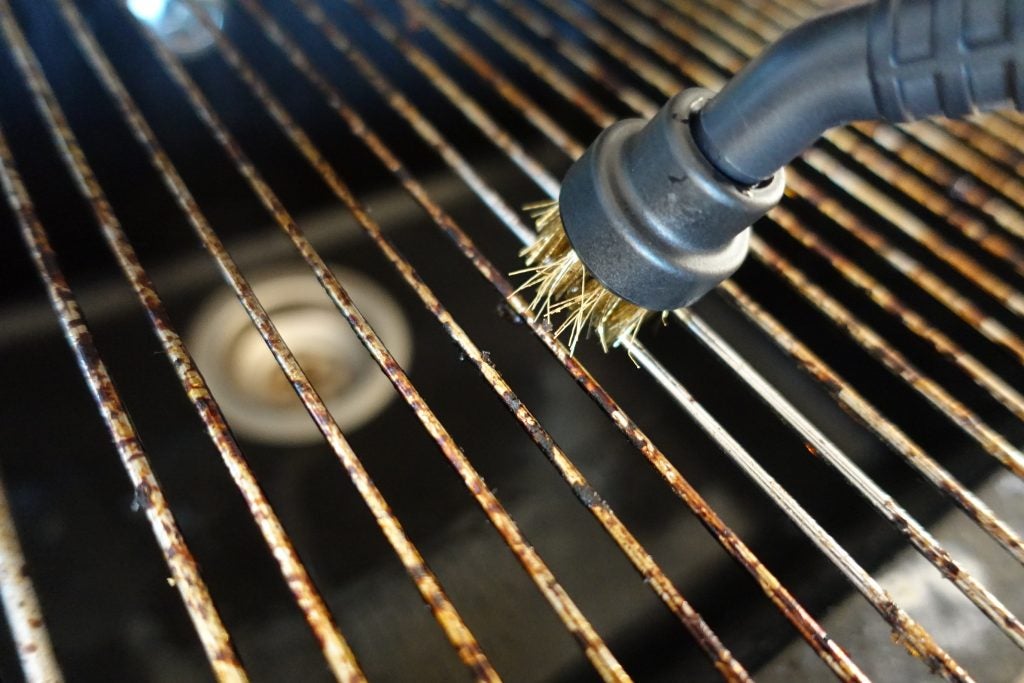
Upholstery and textiles
Some steam cleaners are also suitable for cleaning upholstery or even steaming your clothing. For best results, always vacuum any upholstery surfaces and use a lint roller to remove loose fabric residue and dust from textiles.
For upholstery, a larger tool (or squeegee) with a microfibre cloth is required, to keep the steam from direct contact with the surface. This is useful for both protecting the fabric and making sure your furniture doesn’t end up soaked. Nevertheless, your upholstery surfaces are likely to retain at least some moisture after steaming and will need time to dry.
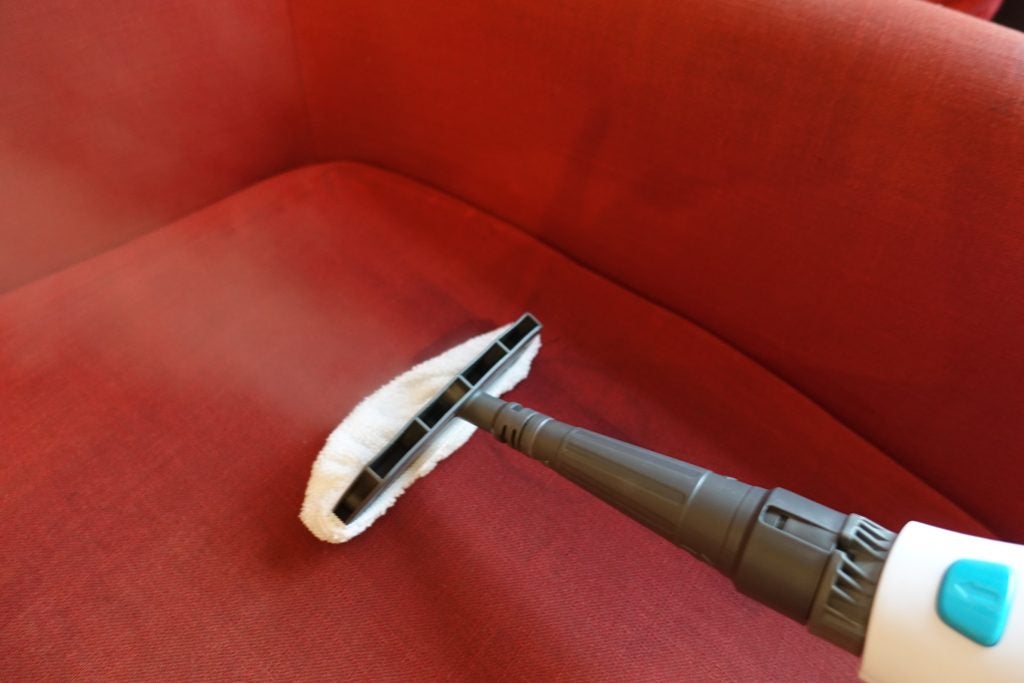
Steam cleaning can help sanitise and refresh the surface of your upholstery – including mattresses – and remove some dirt and light staining. However, it’s unlikely to get rid of stubborn stains. As with carpet cleaning, a more specialised solution may be required here.
While it’s theoretically possible to steam clothing with a steam cleaner, most of the cleaners I’ve tested are far too powerful for this purpose, either emitting too much steam or water. It’s best to try this out at a sufficient distance and on less sensitive materials first, after checking the care labelling of your clothing for heat sensitivity. However, a steam cleaner can be useful for thicker, washable curtains that could be refreshed while still hanging in place.


